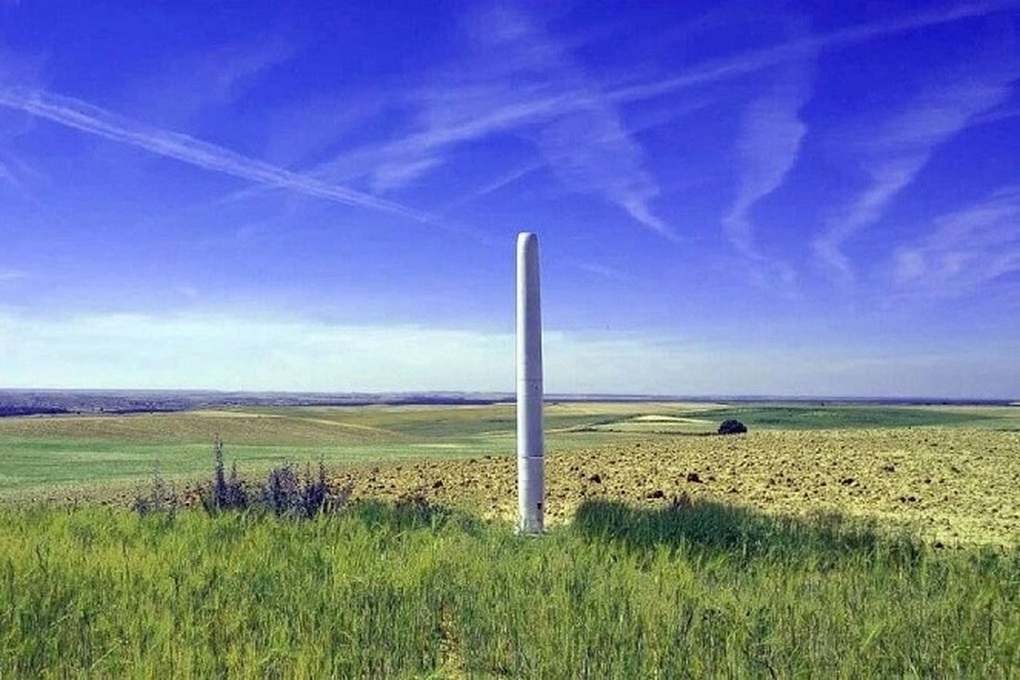For the first time, creating a wind turbine without blades: A clean, safe and environmentally friendly solution
Scientists in the UK have just announced the optimal design for bladeless wind turbines. This is an important step in the journey to conquer renewable energy.
Optimizing design with simulation

Bladeless wind power model (Photo: RE).
In a study published in the journal Renewable Energy , a team led by Dr. Wrik Mallik at the James Watt School of Engineering, University of Glasgow (UK) has for the first time used computer simulation to find the most efficient design for a bladeless wind turbine (BWT).
Unlike traditional turbines that generate electricity through the rotation of the blades, the BWT device operates based on the phenomenon of vortex induced vibration (VIV).
When wind blows through, a vertical column will vibrate if the wind frequency matches the natural frequency of the structure. This movement generates mechanical energy, which is then converted into electricity.
The team simulated thousands of different design configurations to optimize power, durability, and stability in different wind conditions. The result was a breakthrough in efficiency.
Compact, high-power and eco-friendly equipment
The most optimal design is an 80cm high, 65cm diameter pillar, capable of generating up to 460W, many times higher than previous prototypes (about 100W).
At the same time, this device can operate stably in the wind speed range from 32 to 112 km/h, showing high adaptability to actual environmental conditions.
Compared with traditional wind turbines, BWT has many outstanding advantages:
- Smooth operation, almost no noise, suitable for urban and residential environments.
- Simple structure, few moving parts, reducing production and maintenance costs.
- No danger to birds, which is a common problem with bladed turbines due to the motion blur effect that prevents birds from perceiving danger when flying over.
- Takes up little space, easy to install on many different scales, even on the roof of a house.
Dr. Mallik commented that bladeless wind turbines are one of the potential directions to help expand the application of wind power in daily life, especially in places where large turbines cannot be deployed.
Based on the simulation platform developed, the team said it could scale up the design to build larger versions of the BWT, with power outputs of 1,000W or more.
This will make wind power more accessible, not only at the industrial wind farm level but also at the individual household, small business, and residential level.
This is considered an effective complementary solution to the renewable energy ecosystem, in the context of the world strongly shifting towards reducing emissions, increasing clean electricity and moving towards sustainable development.
“More than just a power generating device, this is also a typical example of combining modern simulation technology with basic physics principles to create a feasible, environmentally friendly and practical solution,” the research team emphasized.
By eliminating complex elements such as gearboxes, shafts or blades, and making good use of natural vibrations, bladeless wind turbines could become a new symbol of technological simplicity combined with high efficiency.
Source: https://dantri.com.vn/khoa-hoc/may-dien-gio-khong-canh-lan-dau-lo-dien-cach-hoat-dong-gay-bat-ngo-20250710163804969.htm





























![[Photo] Gia Lai provincial leaders offer flowers at Uncle Ho's Monument with the ethnic groups of the Central Highlands](https://vphoto.vietnam.vn/thumb/1200x675/vietnam/resource/IMAGE/2025/7/9/196438801da24b3cb6158d0501984818)






































































Comment (0)